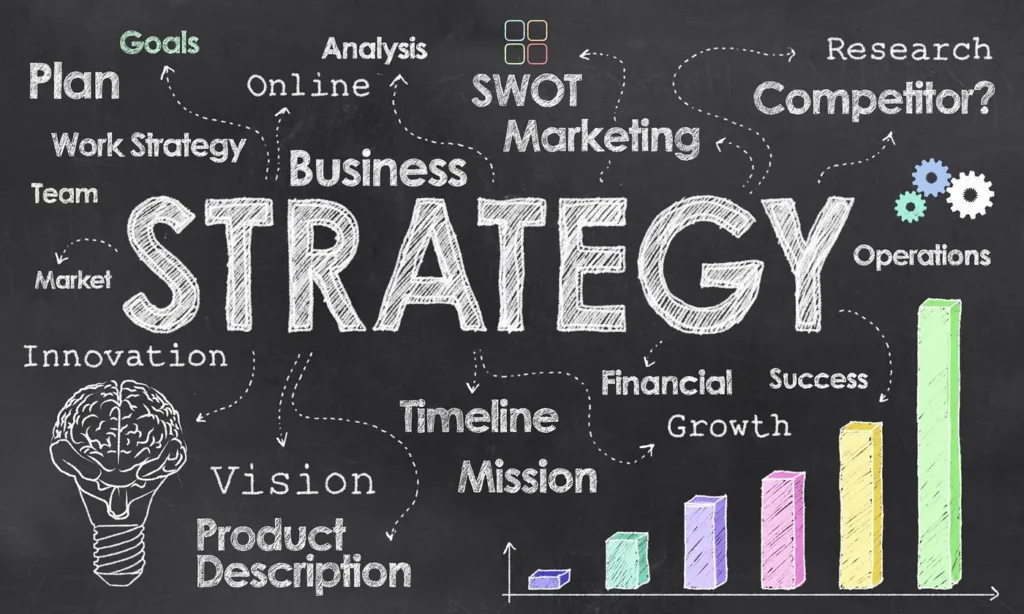In the ever-evolving landscape of the business world, mastering the art of business strategy becomes paramount for organizations aiming for sustained growth and development. Understanding the multifaceted nature of competition and the forces that shape the business environment is crucial to navigating the complexities of the market successfully.
Business strategy serves as the compass guiding companies through the turbulent waters of the market. It is a holistic framework that allows businesses to identify their position, understand their competitive environment, and chart a course towards business growth and development. At its heart, strategy is about making informed choices that position an organization to succeed and thrive in its industry.
The Five Pillars of Business Strategy for Growth and Development
- Understanding the Competitive Forces: Recognizing that competition extends beyond direct rivals is the first step. It encompasses dealing with customers’ and suppliers’ bargaining power, the threat of new entrants, and the presence of substitute products. Each of these forces can significantly impact a company’s ability to grow and remain profitable.
- Differentiation and Value Creation: In a crowded marketplace, standing out is key. Developing a unique value proposition that resonates with your target audience can help insulate your business from competitive pressures. Differentiation isn’t just about being better; it’s about being different in ways that matter to your customers.
- Innovative Business Models: Innovation extends beyond product development. Innovative business models that challenge the status quo can unlock new growth avenues and redefine market boundaries. Think about how you can deliver value in ways that have not been explored fully within your industry.
- Strategic Positioning and Market Segmentation: Understanding where your business fits within the broader market landscape is vital. Segmenting the market and choosing a segment where you can serve customers more effectively than competitors can lead to sustained business growth. It’s about finding your niche and excelling within it.
- Dynamic Adaptation and Continuous Learning: The business environment is not static; it evolves. Continuous learning and the willingness to adapt your strategy in response to market changes are crucial. Stay attuned to industry trends, technological advancements, and shifts in consumer behavior to remain competitive.
Implementation: Bringing Strategy to Life
Developing a robust business strategy is just the beginning. Implementation is where many organizations face challenges. Ensuring that your business strategy is deeply ingrained in every aspect of your organization is critical for success. It requires alignment across all levels of the company, from executive leadership to front-line employees. Strategy should inform decision-making processes, resource allocation, and day-to-day operations.
Conclusion: The Path to Business Growth and Development
In conclusion, crafting and implementing a comprehensive business strategy is indispensable for any organization aiming for growth and development. It’s about understanding the competitive forces at play, differentiating your business, innovating your approach, strategically positioning yourself in the market, and being adaptable to change. As the business landscape continues to change, having a clear and flexible strategy will be your key to navigating the future successfully. Let your business strategy be the foundation upon which you build a resilient, innovative, and thriving business.

